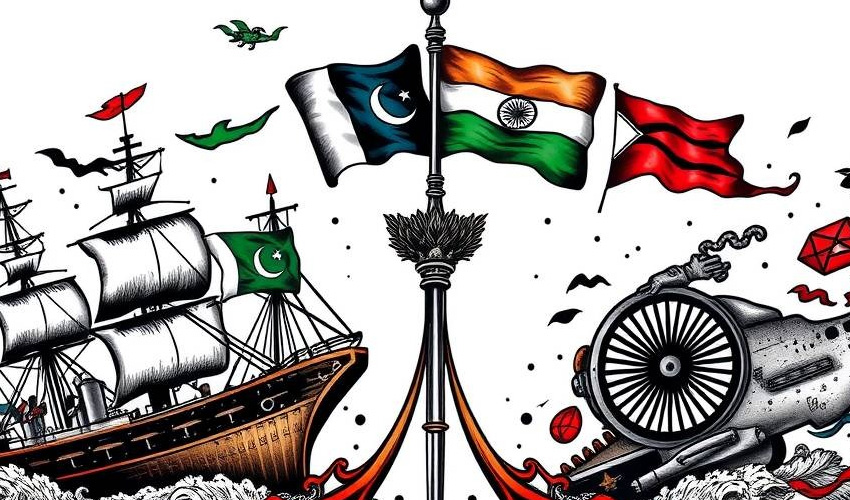The growing naval capabilities of Pakistan have raised significant concerns within India, with Admiral Dinesh Tripathi, the Chief of the Indian Navy, expressing unease over the rapidly developing strength of Pakistan’s naval forces.
In a recent address, Admiral Tripathi highlighted the ambitious expansion plans of the Pakistani Navy, which aims to increase its fleet to 50 ships in the coming years.
India's naval chief underscored the need for a revised strategy in response to the developments, particularly Pakistan's growing collaboration with China, which has been assisting in the construction of ships and submarines for the Pakistani Navy. "We are fully aware of Pakistan’s growing capabilities, and we are adjusting our strategy to mitigate any negative impact on our interests," said Admiral Tripathi. "We are fully prepared to face any challenge."
China’s growing naval influence in the region has added another layer of complexity to the situation. Beijing’s fleet is now believed to be larger than that of the United States, with numerous research and reconnaissance ships permanently stationed in the Indian Ocean. This shift in naval power dynamics has not gone unnoticed in India, which has long maintained a strong presence in the region.
The statement from Admiral Tripathi comes at a time when both India and Pakistan have been heavily focused on expanding their naval forces. Defense analysts have noted that the role of the navy has become increasingly crucial in the changing global security landscape, with naval assets seen as key to securing vital maritime trade routes and maintaining regional influence.
Indian Navy’s Strength
According to sources within the Indian Navy, the country currently operates 150 ships, including a mix of small and large vessels. In addition, India possesses two aircraft carriers, the Russian-built INS Vikram Aditya and the domestically constructed INS Viraat. The Indian Navy also operates 16 conventional submarines and two nuclear-powered submarines, with two additional nuclear submarines under construction. The fleet is complemented by a diverse array of 275 aircraft, helicopters, and drones.
India’s naval expansion has been ongoing for decades, with a notable milestone occurring in 1964 when it became the first navy in the region to add an aircraft carrier to its fleet. The INS Vikrant, an old British vessel, was purchased from Britain, marking the beginning of India’s strategic naval growth.
Defense experts like Rahul Bedi have emphasized India’s careful and gradual expansion over the past 30-40 years. "The Indian Navy has remained focused on building a comprehensive maritime force that can assert its dominance in the region," Bedi said.
Pakistani Navy’s expanding capabilities
On the other hand, the Pakistani Navy has also been rapidly increasing its capabilities, particularly through its partnership with China. Pakistan is working towards expanding its fleet to 50 ships, and this collaboration with China is expected to result in new additions to the navy, including advanced submarines and warships. The increasing military cooperation between Pakistan and China has raised alarms in India, as the latter has consistently expressed concerns over the growing influence of China in the region.
Military analysts suggest that the ongoing naval expansion on both sides of the border is a reflection of the shifting balance of power in South Asia. With both nations focusing on strengthening their maritime forces, the situation remains tense, with the potential for a naval arms race emerging between the two South Asian giants.


























